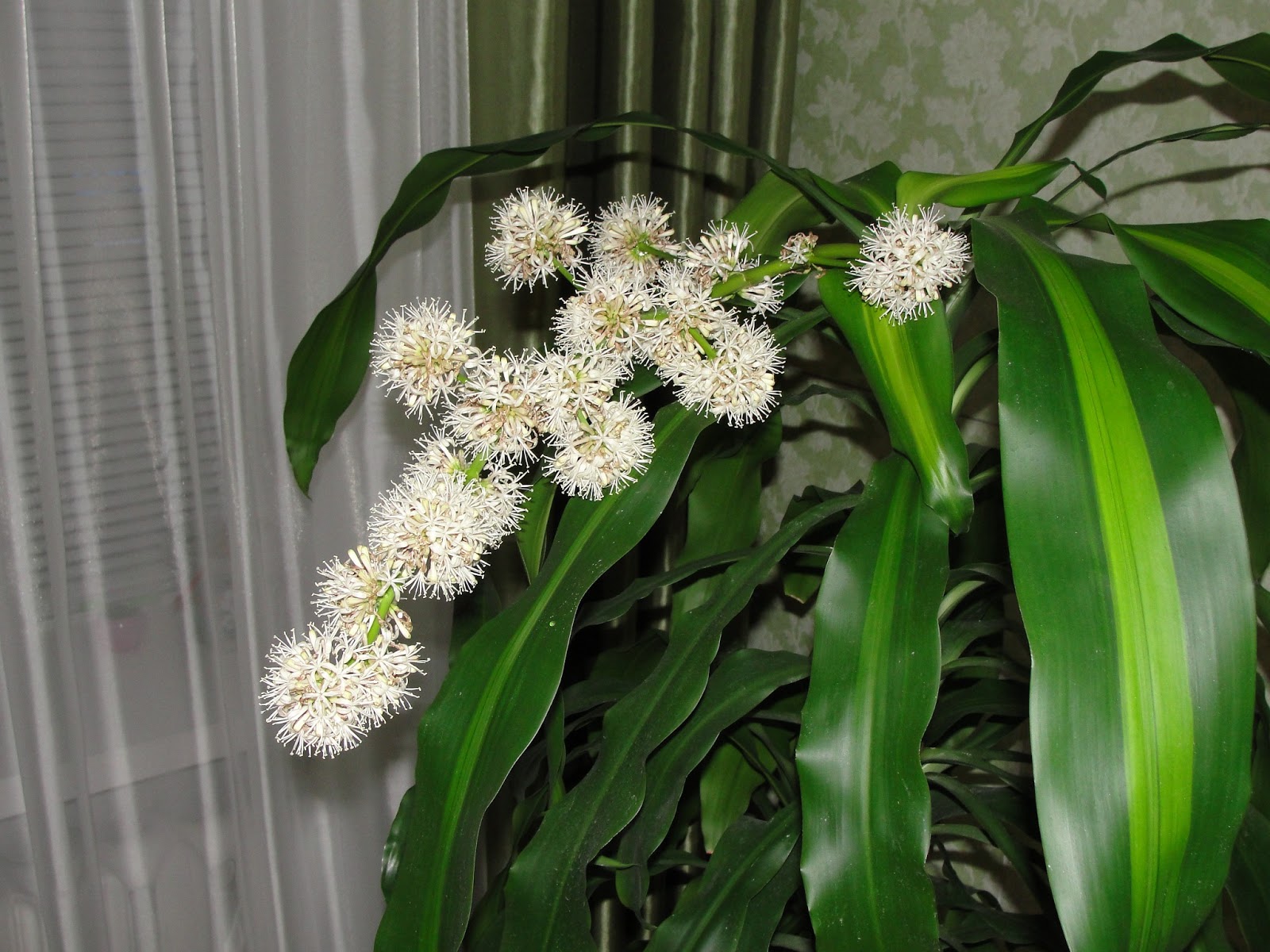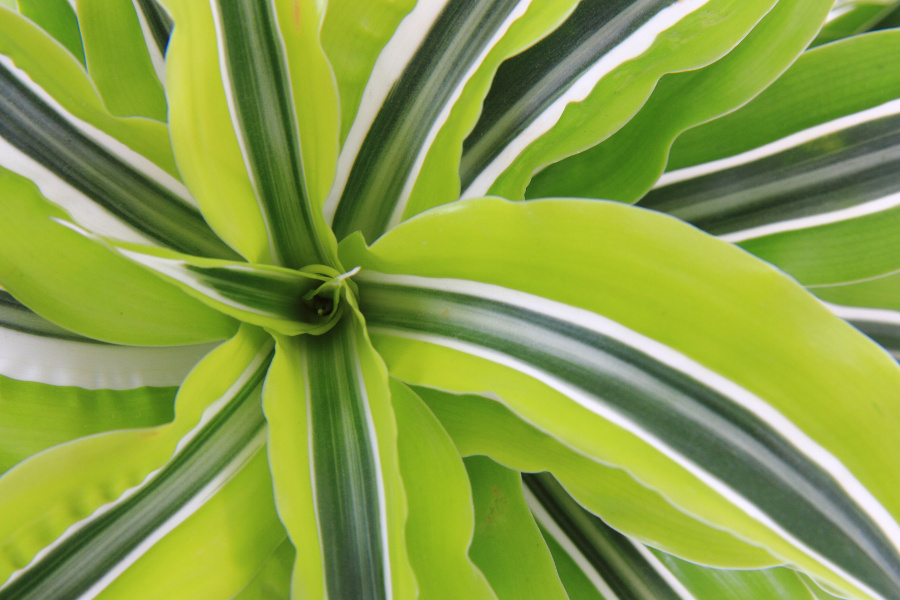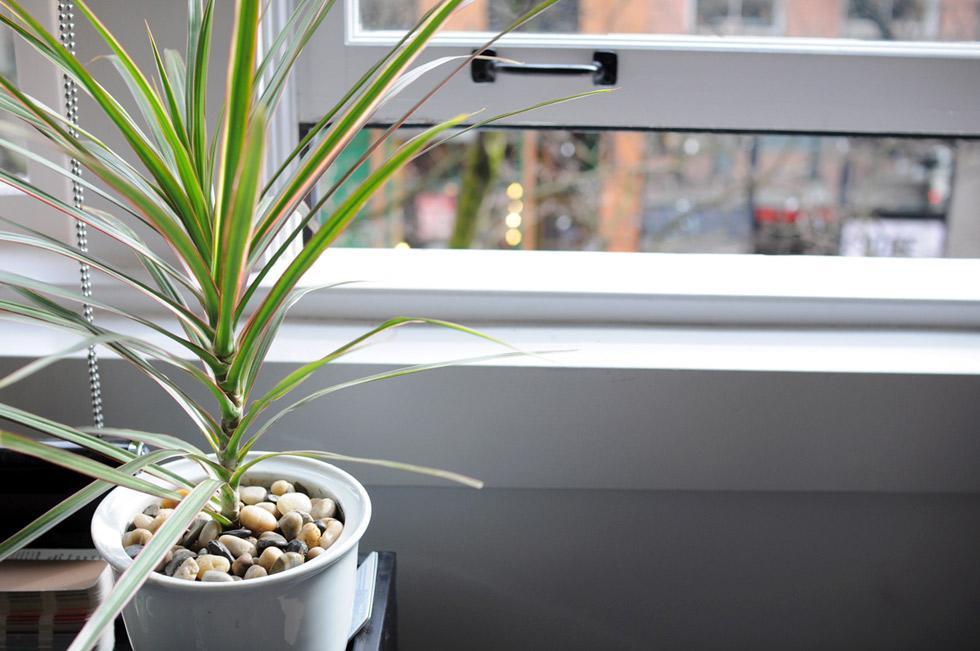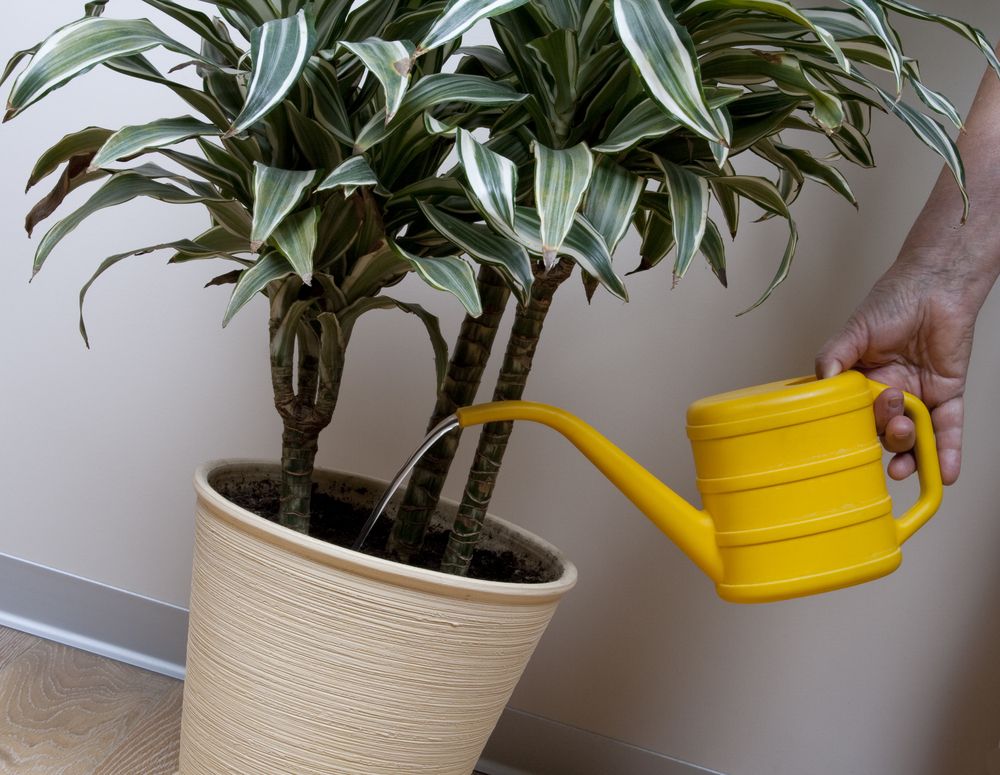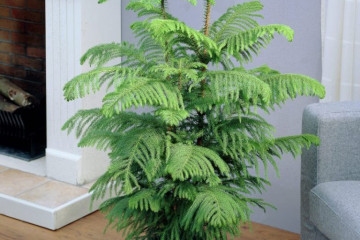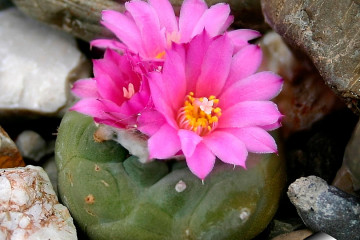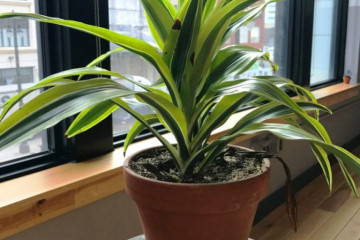Fragrant dracaena - planting and home care
Content:
Dracaena Fragrance or Frag (fragrant) is unpretentious in care. The culture blooms in an open flower bed. In indoor conditions, the plant rarely blooms; it is grown because of its decorative crown. Outwardly, the dracaena resembles a small palm tree. It is easy to care for a indoor flower.
What does fragrant dracaena look like, which family it belongs to
The leaves of the plant are long, strong, have a dense surface, join the top of the trunk in a circle. The color depends on the dracaena variety. Foliage can vary in color, from light yellow to dark green.
There are cultures with double staining of the leaf plate. In such indoor flowers, streaks of white or dark green are clearly visible on the leaves. The trunk of an adult plant is bare.
Fragrant flowers are collected in numerous spherical inflorescences that are located along a long peduncle. Blooming brushes grow directly from a deciduous rosette.
Common varieties
Russian flower growers cultivate about 20 types of fragrant dracaena. All crops are suitable for indoor cultivation. Description of common varieties:
- Dracaena compacta, with good care, grows up to 2 m. The perennial has a lush crown formed from long glossy leaves.
- Yellow Coast. The culture has a spreading fluffy crown. The leaves of the Ellow variety are colored green and yellow. Perennial grows up to 2m. in height.
- Dracaena Lemon Lime. The initially compact bush gradually turns into a tree. With proper care, the culture reaches 2 m. Dracaena Lime foliage is colored in all shades of dark green, yellow and milky. Dracaena Lemon exudes a subtle specific odor.
- Massangeana. Compared to other varieties of dracaena, this crop is more compact. The trunk grows up to 1.5 m. Florists love Massangeana for beautiful dense yellow-green leaves with thin stripes along the plate.
- Golden Coast. The indoor flower has a height of 1 to 1.5 m. Beautiful dense foliage creates a lush crown.
- Malayan. A spectacular tree with a voluminous green crown. The dracaena of this variety reaches a height of 2 meters. Attached to the top are wide, not long leaves. The color closer to the center of the rosette is almost white, the tips of the plates have a rich green color.
Healing properties
In terms of its composition and effect on the human body, dracaena juice is similar to the plant Aloe Vera, which is popular in medicine. The substance is used to prepare medicinal ointments that stimulate rapid wound healing.
The main properties of drugs made on the basis of culture:
- increase immunity;
- have an antioxidant effect;
- help to strengthen the heart muscle.
Traditional healers recommend using dracaena juice to relieve joint pain. Tinctures are used as a sedative to relieve stress.
In folk medicine, remedies made on the basis of Dracaena Frag are used to treat skin diseases and stomach ulcers. For this purpose, the juice of the plant is diluted with grape alcohol. The drug is suitable for oral cavity treatment. The drug relieves inflammation well, has an astringent effect on the intestines. It is used for diarrhea.
Features of caring for Dracaena Fragrans at home
The culture is easy to care for. The specimens that exist in Russia were bred by selection in greenhouses and have long been adapted to the indoor microclimate.
Temperature
In the warm season, the flower needs a temperature of + 19 ... +25 ° C. In a hotter room, you will have to increase the watering and spraying of the plant. In winter, the flower is comfortable at a temperature of + 15 ... +19 ° C. If it drops below +10 ° C, the plant becomes sick. In the cool season, you need to protect the dracaena from drafts.
Lighting
Dracaena is a light-loving plant. For him, sunny windows facing east are suitable. In the summertime, the bush must be protected from direct rays. Varieties with green leaves tolerate partial shade well, and variegated varieties can lose their characteristic color in poor lighting.
Watering and spraying
Being a tropical culture, fragrant dracaena loves moisture. Watering should be regular but moderate. Water needs settled, room temperature.
In the summer heat, the flower is watered 2 times a week, in winter - only once a week. If the pot is near working heating devices, the flower is watered in summer mode, sprayed with water 2 times daily and the foliage is wiped with a damp sponge.
When watering, they are guided by the state of the earthen coma in the pot. The next portion of water should be added if it has dried out by 2-3 cm. It is important to loosen the soil before watering so that the water better flows to the roots.
Humidity
In rooms with dry air, a saucer of water is kept next to the plants, the flowers themselves are sprayed daily from a spray bottle, but not forgetting to shake off excess moisture from the foliage. These procedures are aimed at increasing air humidity.
Pots with bushes are placed in trays, into which water is poured daily. It is important that a gravel drainage layer is laid at the bottom of the flower container.
Priming
Dracaena soil can be purchased at a specialty store. A mixture for palm trees is suitable.
The soil is independently made from the following components:
- land from a flower bed - 3 parts;
- peat and river sand in 1 part.
A little charcoal is added to the soil so that the roots do not hurt. Small pieces of broken brick are placed at the bottom of the pot to improve the permeability of the soil.
Top dressing
Useful substances are introduced into the soil from March to September once every 10-14 days. The culture accepts well the alternation of organic fertilizers with mineral mixtures.
In winter, feeding is needed once a month. Complex preparations with a low phosphorus content are selected.
Features of care in winter, dormant period
In winter, the plant requires a temperature of +15 to +19 ° C. Watering is limited, but the soil in the trays should not be allowed to be dry. Top dressing is carried out once a month.
Dracaena flowering
At home, dracaena blooms are rare, but, according to the observations of flower growers, fragrant dracaena blooms more often than other varieties. During the flowering period, the plant exudes a strong aroma. The fragrance is reminiscent of cut grass.
The flowers of the culture are small, tubular, collected in rounded inflorescences. Fluffy balls are attached to a long peduncle. The flowers are colored white-milky, white-green or yellow.
Changes in care during flowering
When the plant has bloomed, you cannot transfer it to another place. The buds may crumble. It is unacceptable to apply too much fertilizer. Regular watering is required.
Pruning
Excess shoots and leaves are removed if the shoots are too elongated, and the plant begins to look sloppy. The tree should resemble a palm tree. The plant can branch out the crown.
The top is cut so that 4 healthy leaves remain on the trunk. Places of cuts are treated with crushed coal and wrapped in polyethylene. The protective material is removed after the emergence of lateral shoots.
How fragrant dracaena multiplies
There are several ways to get a new flower. For Russians, the most affordable option for plant propagation is rooting cuttings.
Germinating seeds
Getting your own seeds is difficult, since dracaena rarely blooms indoors. Planting material is purchased through the online store.
Before sowing, the seeds are kept in a nutrient solution that stimulates growth. The liquid must be warmed up to + 30 ° C. The prepared seeds are placed in the soil for palm plants. Until the sprouts hatch, the crops are kept under a film.
The first shoots may appear within 30-40 days. The shelter is removed when young plants reach 5-6 cm in height. After that, the shoots can be planted.
Rooting cuttings
Several pieces of 3 to 5 cm long are cut from a strong young stem. Each piece should have 2 to 4 buds.
The bark is cut on one side of the handle and the bare area is placed in the ground. The sticks are covered with a jar or bottle. Plantings are regularly watered and protected from sunlight. The first shoots will appear in 30-45 days. You cannot remove the greenhouse until the plant gets stronger.
Air layering
A small incision is made on the bark on the trunk slightly below the top. A section of the trunk is wrapped with polyethylene, under which a small lump of wet peat needs to be formed. After about 30 days, new roots form in the bag. The crown with a new root system is cut off. The new plant is placed in a separate pot.
Other options
The top of the flower is cut off with a piece of stem 10-15 cm long. The cut is treated with charcoal. The cut off top part is planted in peat. The plant is regularly watered, and a greenhouse is created above it.
Transfer
When the bush grows, it is moved to a larger pot. The roots, together with a lump of earth, are transferred to another container. The voids are covered with fresh soil, and broken brick and charcoal are laid on the bottom. The lack of a drainage layer leads to root rot.
Possible growing problems and diseases
Dracaena can get sick, be attacked by pests. By external signs, they judge the need to make changes in care.
Drops buds and leaves
There may be several reasons for this condition:
- The flower was moved to another place.
- The air in the room is too dry.
- The plant lacks nitrogen.
Another reason lies in the lack of moisture. Drafts cause great harm to home flowers.
Leaves turn pale
The appearance of light dry spots on the foliage indicates sunburn. Leaves turn pale with a lack of water and nutrients.
The tips of the leaves dry
The tips of the foliage dry out if the plant lacks moisture.Some infectious diseases have the same symptoms.
The lower leaves fall
Leaves affected by parasites fall. You can get rid of mealybugs by regularly washing the leaves with warm soapy water. Pests do not like spraying with garlic infusion.
Pests
Parasites that often attack dracaena:
- spider mite;
- aphids;
- scabbards;
- mealybugs.
If pests are found, the bushes are treated with store-bought chemicals.
Other problems
Plant death can be caused by abundant watering during the cold season. Temperatures below +15 ° C are harmful for a flower.
Signs and superstitions
According to Indian legend, dracaena juice is composed of dragon and elephant blood. The flower is called the tree of happiness. When it blooms, peace and material well-being come to the family. Fragrant dracaena is able to reflect negative energy, protect people living in the house from the evil eye and negative energy.
The spectacular dracaena fits well into the interior of an office or apartment. The flower is easy to care for. To get a new plant, it is enough to place a piece of a twig in the ground. Thanks to these qualities, the culture has gained popularity among Russian flower growers.
